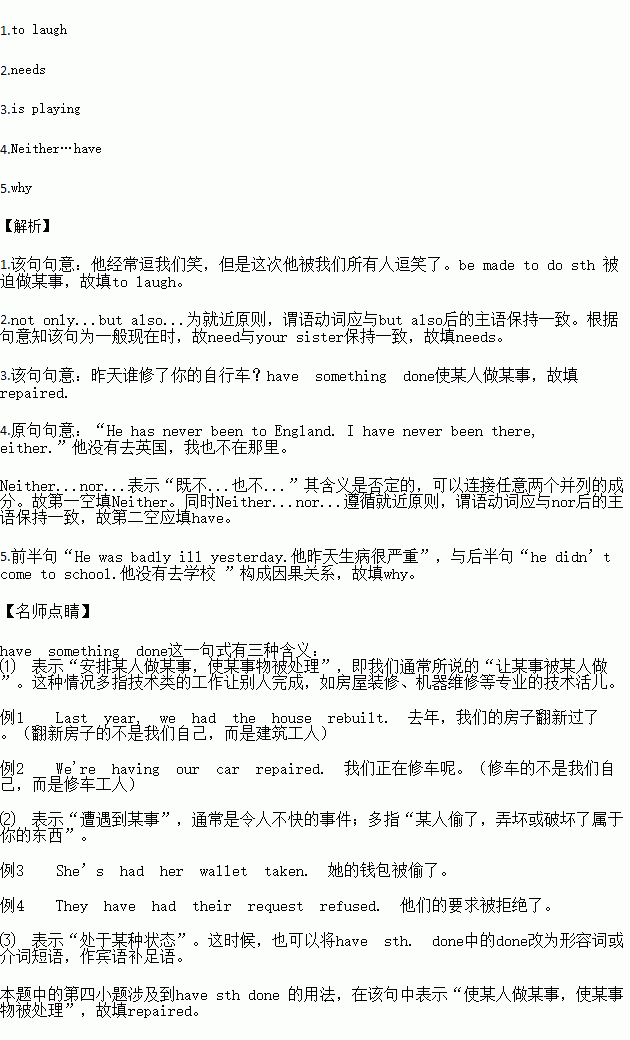题目内容
1.He often makes us laugh, but this time he was made ____________(laugh)by us all.
2.Not only you but also your sister ________(need) to cut the grass though you may hate doing it.
3.–Who did you have_______(repair) your bicycle yesterday?
--John.
4.He has never been to England. I have never been there, either. (合并二个句子,不改变其意思)
________he nor I ___________been to the England before.
5.He was badly ill yesterday. That was _______he didn’t come to school. (选词填空)
练习册系列答案
相关题目

